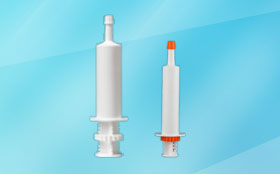The veterinary syringe is a kind of high-tech, practical, new type of injection packaging that is quietly emerging in recent years. This type of veterinary packaging originated from abroad and is mainly used in the packaging of drugs such as dairy cow mastitis and pet nutrition cream. Due to the dual functions of liquid medicine packaging and injection, prefilled syringes have high requirements for sterility. So which sterilization method is more suitable forveterinary syringes?
The sterilization methods of the yringe infusion device mainly include ethylene oxide and cobalt 60 irradiation sterilization, depending on the packaging material. Take sterilization adaptability as an example. Ethylene oxide sterilization requires materials to have sufficient air permeability to ensure that while steam permeates, there are fewer or no gas residues after sterilization; radiation sterilization does not require materials to have air permeability Performance, but gamma rays or high-energy electron beams may cause damage to polymer materials, making the materials brittle and easy to crack, so materials such as PP and PVC cannot generally be used. In terms of microbial barrier properties, air-permeable materials may lose their barrier capabilities under the long-term permeation of high-temperature steam, and qualified sterilization packaging materials must still maintain microbial barrier capabilities after sterilization.
With the vigorous development of the veterinary drug industry, the quality and functional requirements of packaging have also been continuously improved. Qualified prefilled infusion devices must meet the requirements of sterilization adaptability, microbial barrier properties, physical and chemical properties, etc. Packaging is not completely sterilized and is contaminated, causing unnecessary losses. Packaging manufacturers should also choose the most suitable sterilization method according to the material properties of the sterilization packaging.

没有评论:
发表评论